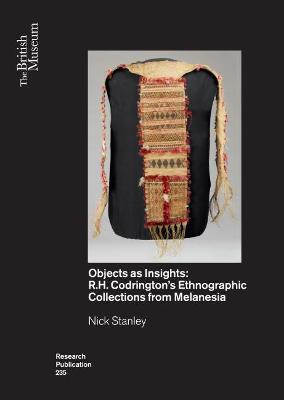British Museum Research Publications
1 primary work
Book 235
Robert Codrington (1830-1922) trained to be a priest at Oxford University. He volunteered to work in Nelson, New Zealand, from 1860-4 and was appointed as headmaster of the Melanesian Mission training school on Norfolk Island in 1867. He spent the next twenty years in this post and for eight of these he was the head of the Mission travelling through the Melanesian region. Throughout his time in the region he attempted to gain an ethnographic understanding of the people whom he was serving. To this end he studied local languages and translated scriptures into Mota, the lingua franca of the Mission. However, for Codrington material artefacts were fundamental to his understanding of Melanesian life. He took a lively interest in material culture as a collector and donated objects to a number of museums, including the British Museum and The Pitt Rivers Museum. His specialist knowledge made him a valued informant for scholars of Melanesia who regularly consulted him. He is regarded today as one of the founding scholars of Pacific anthropology.
This book intends to provide a more comprehensive understanding of how Codrington formed his collection, through the study of his written anthropological works, correspondence with other collectors and scholars and particularly through the private correspondence with his brother and his five journals written between 1867 and 1882. The book also highlights his equally important contribution to the development of material culture studies in the region and how his work has influenced Melanesian studies to the present day.
This book intends to provide a more comprehensive understanding of how Codrington formed his collection, through the study of his written anthropological works, correspondence with other collectors and scholars and particularly through the private correspondence with his brother and his five journals written between 1867 and 1882. The book also highlights his equally important contribution to the development of material culture studies in the region and how his work has influenced Melanesian studies to the present day.
